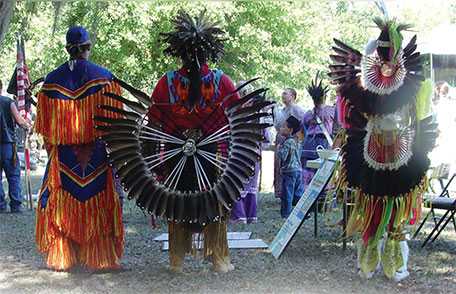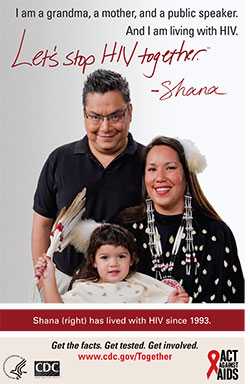National Native HIV/AIDS Awareness Day
 The four seasons are highly respected in many cultures because they represent the cycle of life. The Spring Equinox is a time of equality and balance. It is a time of new beginnings. March 20th is National Native HIV/AIDS Awareness Day (NNHAAD). We hope this awareness day will bring about an awareness of the presence of HIV/AIDS in our Native communities – American Indians, Alaska Natives and Native Hawaiians.
The four seasons are highly respected in many cultures because they represent the cycle of life. The Spring Equinox is a time of equality and balance. It is a time of new beginnings. March 20th is National Native HIV/AIDS Awareness Day (NNHAAD). We hope this awareness day will bring about an awareness of the presence of HIV/AIDS in our Native communities – American Indians, Alaska Natives and Native Hawaiians.
We recognize the impact of HIV/AIDS on American Indians, Alaska Natives, and Native Hawaiians (collectively referred to as Native people) through the observance of National Native HIV/AIDS Awareness Day. This national observance, now in its 11th year, is sponsored by a coalition of partners who provide assistance to Native organizations, tribes, state health departments, and other organizations serving Native populations.
Observed annually on the Spring Equinox, NNHAAD is a national community mobilization effort designed to encourage American Indians, Alaska Natives, and Native Hawaiians across the United States and territorial areas to get educated, get tested, and get involved in HIV prevention, care, and treatment. This year’s theme is Unity is CommUnity – Stand Strong to Prevent HIV!

The Let’s Stop HIV Together campaign raises awareness about HIV and fights stigma.
HIV in Native Communities in the United States
Of the 39,513 HIV diagnoses in the United States in 2015, one percent (209) were among American Indians and Alaska Natives (AIs/ANs). Of those, 73% were men, and 26% were women. Of the 152 HIV diagnoses among AI/AN men in 2015, most (79%, 120) were among gay and bisexual men. From 2005 to 2014, the number of new HIV diagnoses increased 19% among AI/AN overall and 63% among AI/AN gay and bisexual men.1
With more than 560 federally recognized AI/AN tribes and 170 languages, cultural diversity can pose a challenge in HIV prevention. Also, poverty, stigma associated with gay relationships and HIV, barriers to mental health care, and high rates of alcohol and drug abuse and STDs all increase the risk of HIV in Native communities and create obstacles to HIV prevention and treatment.
Native communities are working to overcome these barriers by increasing HIV/AIDS awareness, encouraging HIV testing, and promoting entry into medical care. CDC is working with communities to share stories, build awareness, and reduce the toll of HIV.
CDC recommends that all adults and adolescents get tested for HIV at least once as a routine part of medical care while those at increased risk should get an HIV test at least every year. HIV testing is vital and sexually active gay and bisexual men might benefit from HIV testing every 3 to 6 months.
What Can You Do?
Visit the CDC HIV/AIDS website to learn:
- Where to get tested for HIV. To find a testing site near you, call 1-800-CDC-INFO (232-4636), go to GetTested, or text your ZIP code to KNOW IT (566948). Home testing kits are available online or at a pharmacy. You may also find a testing location by visiting your local IHS Tribal or Urban facility, or through Indian Health Service.
- How to talk about HIV prevention with family, friends, and colleagues and on social media.
- More about how HIV affects Native populations
You can also visit the National Native HIV/AIDS Awareness Day website (NNHAAD.org) to get materials such as posters, save the date cards, fact sheets, an NNHAAD tool kit, and public service announcements (PSAs).
Reference
- Centers for Disease Control and Prevention. Data trends fact sheet [2.37 MB].
- Page last reviewed: March 20, 2017
- Page last updated: March 20, 2017
- Content source:
- National Center for HIV/AIDS, Viral Hepatitis, STD, and TB Prevention
- Page maintained by: Office of the Associate Director for Communication, Digital Media Branch, Division of Public Affairs




 ShareCompartir
ShareCompartir